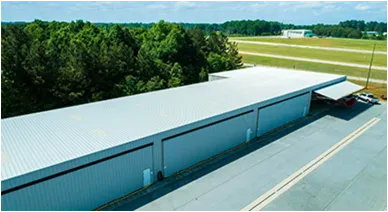- Afrikaans
- Albanian
- Amharic
- Arabic
- Armenian
- Azerbaijani
- Basque
- Belarusian
- Bengali
- Bosnian
- Bulgarian
- Catalan
- Cebuano
- Corsican
- Croatian
- Czech
- Danish
- Dutch
- English
- Esperanto
- Estonian
- Finnish
- French
- Frisian
- Galician
- Georgian
- German
- Greek
- Gujarati
- Haitian Creole
- hausa
- hawaiian
- Hebrew
- Hindi
- Miao
- Hungarian
- Icelandic
- igbo
- Indonesian
- irish
- Italian
- Japanese
- Javanese
- Kannada
- kazakh
- Khmer
- Rwandese
- Korean
- Kurdish
- Kyrgyz
- Lao
- Latin
- Latvian
- Lithuanian
- Luxembourgish
- Macedonian
- Malgashi
- Malay
- Malayalam
- Maltese
- Maori
- Marathi
- Mongolian
- Myanmar
- Nepali
- Norwegian
- Norwegian
- Occitan
- Pashto
- Persian
- Polish
- Portuguese
- Punjabi
- Romanian
- Russian
- Samoan
- Scottish Gaelic
- Serbian
- Sesotho
- Shona
- Sindhi
- Sinhala
- Slovak
- Slovenian
- Somali
- Spanish
- Sundanese
- Swahili
- Swedish
- Tagalog
- Tajik
- Tamil
- Tatar
- Telugu
- Thai
- Turkish
- Turkmen
- Ukrainian
- Urdu
- Uighur
- Uzbek
- Vietnamese
- Welsh
- Bantu
- Yiddish
- Yoruba
- Zulu
Oct . 22, 2024 11:59 Back to list
Steel Building Structures An Overview
Steel building structures have become a hallmark of modern architecture and construction, thanks to their versatility, strength, and durability. The use of steel in construction dates back to the 19th century and has evolved significantly, making it a preferred material across various sectors. This article will delve into the characteristics, advantages, applications, and challenges associated with steel building structures.
Characteristics of Steel
Steel, an alloy of iron and carbon, possesses several key properties that contribute to its suitability as a construction material. It is known for its high tensile strength, which allows it to withstand substantial loads while being relatively lightweight compared to materials like concrete. Additionally, steel can be manufactured in various shapes and sizes, providing architects and engineers with the flexibility to design innovative structures.
Another notable characteristic of steel is its ductility, which enables it to deform under stress without breaking. This property is particularly essential in regions prone to seismic activity, as it allows buildings to absorb and dissipate energy during an earthquake. Furthermore, steel is non-combustible and can be treated to resist corrosion, enhancing the longevity of structures.
Advantages of Steel Building Structures
One of the primary advantages of using steel in construction is the speed of assembly. Pre-fabricated steel components can be manufactured in factories and delivered to the construction site for rapid assembly, significantly reducing construction time. This efficiency not only minimizes labor costs but also allows for quicker project turnover, which is particularly advantageous in today's fast-paced construction environment.
Steel structures are also highly adaptable, making them suitable for various applications. From commercial buildings and warehouses to bridges and residential homes, steel can accommodate different design requirements and usage patterns. The modular nature of steel construction allows for easier modifications and expansions, which is beneficial for businesses anticipating growth.
Sustainability is another crucial advantage of steel building structures. Steel is 100% recyclable, and many buildings today incorporate recycled steel, reducing the need for virgin materials and lowering environmental impact. Additionally, steel structures often have a lower carbon footprint when considering the entire building lifecycle, from manufacturing through demolition.
steel building structures

Applications of Steel Building Structures
The versatility of steel has led to its widespread use in various applications. In commercial construction, steel frames are integral to skyscrapers and office buildings, offering the required height and open spaces for modern work environments. Industrial facilities often utilize steel due to its strength and durability, making it ideal for factories and manufacturing plants.
In the realm of infrastructure, steel is a preferred material for bridges, stadiums, and public transportation systems. Its ability to endure varying environmental conditions makes it suitable for these critical structures. Moreover, in residential construction, steel is gaining popularity in modern homes, particularly in areas prone to natural disasters where resilience is paramount.
Challenges of Steel Building Structures
Despite its numerous advantages, the use of steel in construction does come with challenges. One significant concern is the susceptibility of steel to corrosion, particularly when exposed to moisture and chemicals. While protective coatings can mitigate this issue, they require maintenance and periodic reapplication.
Another challenge is the initial cost of steel, which can be higher than traditional materials like wood or concrete. However, when considering the long-term benefits, including durability, low maintenance, and energy efficiency, many find that steel can be a more economical option over time.
Lastly, the construction industry must address the carbon footprint associated with steel production. Innovations in green steel production and the use of renewable energy in steelmaking are making strides towards reducing this environmental impact.
Conclusion
Steel building structures represent a blend of strength, adaptability, and sustainability, making them a cornerstone of modern construction. As technology advances and the construction industry evolves, the potential for innovative applications of steel is boundless. Understanding the characteristics, advantages, and challenges of steel will enable architects, engineers, and builders to harness its full potential in creating structures that enhance our urban environments while addressing sustainability concerns.
-
How Do Prefabricated Steel Structures Transform Modern Construction?
NewsJul.14,2025
-
How Do Prefabricated Metal Buildings Redefine Modern Construction?
NewsJul.14,2025
-
How Do Prefab Insulated Metal Buildings and Steel Structures Revolutionize Modern Construction?
NewsJul.14,2025
-
How Do Pre - Engineered Steel Structures Redefine Modern Construction?
NewsJul.14,2025
-
Advancing Modular Construction with Prefabricated Metal Structures
NewsJul.14,2025
-
Advancing Industrial Infrastructure with Prefabricated Steel Solutions
NewsJul.14,2025
Products categories
Our Latest News
We have a professional design team and an excellent production and construction team.












